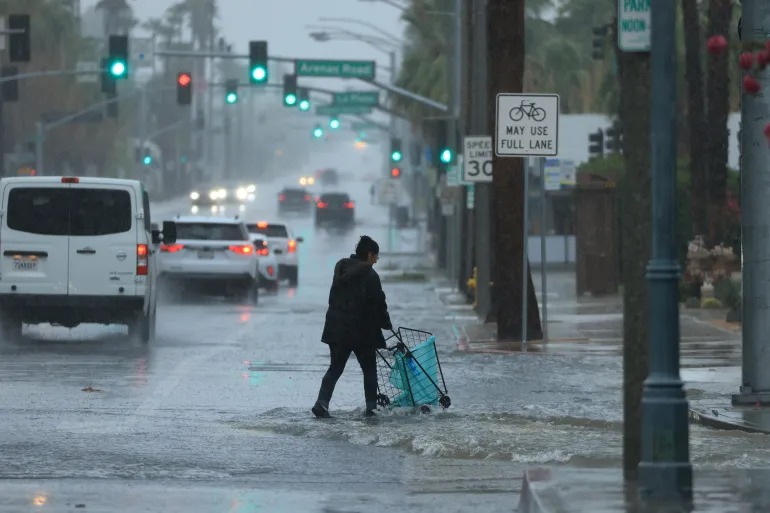Southern California, known for its arid climate, finds itself in a state of emergency as Tropical Storm Hilary wreaks havoc, drenching the region with an unprecedented downpour. California Governor Gavin Newsom’s declaration of emergency reflects the severity of the situation as the storm, originating from Mexico, brings heavy rain and a looming threat of severe flooding to an area accustomed to drought.
Unprecedented Rainfall Threatens California
As Tropical Storm Hilary charges across Southern California, the state faces an uncharacteristic deluge that meteorologists deem a potentially historic event. This rare phenomenon, driven by the storm’s arrival from Mexico, has led to widespread flash flooding in areas that are typically dry, leaving residents and authorities grappling with a daunting challenge.
State of Emergency and Federal Response
Governor Newsom’s swift declaration of a state of emergency underscores the gravity of the situation. Flash flood warnings, now pervasive across Southern California, stand as a stark reminder of the region’s vulnerability to the storm’s impact. President Joe Biden has assured the deployment of federal emergency teams and resources, emphasizing the need for cooperation with state and local officials in addressing the crisis.
Unpredictable Consequences and Preparedness
The unpredictable nature of Tropical Storm Hilary is evident in the rapid transformation of weather conditions. Palm Springs, usually parched, witnessed a staggering 60-minute rainfall that surpassed historical records. Such immediate changes necessitate vigilance and preparation, as Governor Newsom urges residents to stay cautious and remain informed.
Amid the storm’s intensity, unforeseen events added to the chaos. A 5.1-magnitude earthquake jolted Ojai, northwest of Los Angeles, causing further disruption. Despite the challenges, Mexican communities also grappled with Hilary’s impact, with evacuations and casualties underscoring the storm’s widespread reach.
Furthermore, as the storm approached the densely populated Mexican border city of Tijuana, its Category 4 status weakened. This phenomenon highlights the complex dynamics of these weather events, with scientists attributing their increasing intensity to the broader context of climate change.
As Tropical Storm Hilary’s fury continues to unfold across Southern California and Mexico, the region faces an unprecedented challenge. The declaration of a state of emergency, combined with federal assistance, reflects the coordinated response to this extraordinary event. The storm’s rapid and unpredictable impact underscores the importance of preparedness and resilience in the face of climate change’s evolving consequences.
















